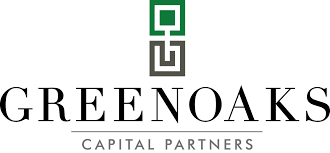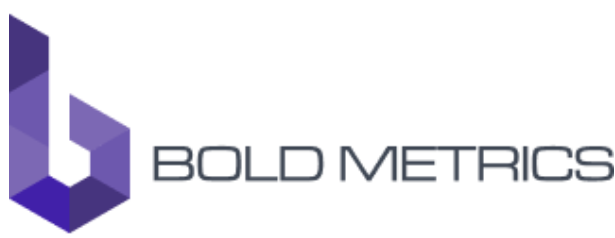About me
Hi, and thank you for coming over to my personal page!
I'm Denys and the image below shows me in the middle of one of my favourite activities—figuring things out with a pen and paper before acting it out into the world.
Sections below should give you a good overview of my professional side of life:

My story
If it was not for the data mining coursework back in 2011 where I needed to answer a number of questions about a very real grove of trees based on CSV files full of data points, I might have chosen something entirely different to spend my time on. There was something attractive about being able to better understand a complex natural phenomenon from the comfort of an organized and laptop-backed workplace.
Memories of that data mining project, along with the need to pay the bills, brought me to the course offering job placement in what was called "business intelligence" back in 2013. My very first project was with an oil and gas corporation. We worked with relational databases, built drag-and-drop ETL pipelines, and massaged and quality-checked the data to make it fit for further dashboarding and analysis of the oil wells.
After a couple of years of this, I naively thought that I was getting close to mastering the entire data kitchen. Until Hadoop came along. I vividly remember picking up my very first O'Reilly book from the post office in Kyiv—the Definitive Guide to Hadoop with an elephant on the cover. While I started going deep into the rabbit hole of distributed computing and implementing first POCs with the new technologies, the entire open source data ecosystem started expanding by the hour. Somehow, it was the last time when I remember feeling remotely complacent with my knowledge and skills...
While the new data frameworks were popping up every single day, and "data scientist" becoming the sexiest job on the market, I recieved a job offer from a German unicorn and got busy organising my move to Berlin, which I successfully carried out in spring of 2016.
While new data frameworks were popping up every single day, and 'data scientist' becoming the sexiest job on the market, I received a job offer from a German unicorn and got busy organising my move to Berlin, which I successfully carried out in in the spring of 2016.
Working for product companies in Europe and the US was an entirely different story. All the aspects from which I used to be shielded by my delivery managers started coming into play. Cross-team work, implementing change, managing expectations and communication when delivering a technological solution—all of this while wearing the main hat of a data engineer. All of this occupied the central stage—not the technical implementation itself.
At one point, after a random call from a recruiter, I discovered, tasted, enjoyed, and actively engaged with the world of freelancing. Working with a variety of companies on freelance assignments, sometimes in parallel to my full-time job, further solidified my belief that the hardest and most important thing about any data system design is the alignment of goals, communication and implementation of change, and building up processes. All of this needs to happen for the technical implementation to get a chance to be appreciated.
After working with more than a dozen companies, building numerous data platforms, from working with boring batch CRM data to working with slightly more exciting real-time data facilitating autonomous driving features, from working for companies ranging from dynamic one-person to much more boring hundreds of thousands, from individual contributor to team lead and people manager, I keep working at the intersection of what I enjoy the most—designing technical systems with a clear priority on human collaboration. There is still a lot for me to learn in both areas.
Companies i worked with
One of my biggest professional strengths comes from the sheer number of different companies, technologies, and team constellations I have worked with. This experience helps me make increasingly precise and effective decisions, both technical and interpersonal, when engaging in a new project.
| Company | Industry | My contribution |
|---|---|---|
 |
finance payments LBO |
Built a data engineering team and a data platform from scratch, integrating data from over ten companies for a leveraged buyout venture. Enabled multiple reporting, analytics, and data-products use-cases. Supported migration and consolidation of multiple backend systems. |
 |
automotive | Supported and further developed infrastructure for collecting real-time offboard data from vehicles across EMEA, US, and CN regions, enabling multiple use-cases such as map creation, traffic navigation, and road hazard alerting. Facilitated the migration of workloads from AWS to Alibaba Cloud. |
 |
finance P2P lending |
Integrated multiple data sources (operations, marketing, CRM, sales) into a data warehouse, supported the EU part of the business with all data-related requests, partiticipated in developing and mainteaining batch- and real-time pipelines for US and UK business, educated and supported a team of a data engineer and two data analysts |
 |
e-commerce fashion |
Further developed and maintained ML pipelines for predicting returns |
 |
oil & gas | Built drag-and-drop ETL pipelines, data marts, and managed release process to enable oil wells analysis |
 |
marketplace | Sped up by more than tenfold CRM and website activity logs analysis processes by introducing popular at the time data processing tools from Hadoop ecosystem as a replacement for non-distributed and relational workloads |
 |
pharma | Further developed and maintained ML pipelines for predicting the next-best-action for pharmaceutical sales reps |
 |
finance investments |
Built a datawarehouse from scratch and enabled reporting capabilities for investments and customer journey analysis |
 |
finance investments |
Helped to setup tooling and framework for investment opportunities analysis |
 |
gaming | Helped a team of two data engineers and a data analyst to implement a real-time in-game events monitoring solution across multiple game titles |
 |
finance banking |
Supported the development of the reporting and analysis framework for internal product teams |
 |
fashion ML-based SaaS |
Helped with a set up of infrastructure, data pipelines, and team for the new customer-facing dashbord data-product |
 |
finance payments |
Optimised data pipelines supporting a data product revenue stream from industry partners, and integrated fine-tuned LLMs to improve labeling accuracy, enhancing the quality and value of the offering |
Recommendations
An idea of asking people for recommendations is new to me, however it is something I plan to do more of in the future.






My guiding principles
Complete clarity of business goals and motivations
Before getting even remotely close to considering a technical solution design I seek to understand and clarify the underlying business needs and drivers. This usually saves everyone involved a lot of time, effort, money, and emotional resources. Data-centric projects are prone to drifting towards non-functional requirements, however projects where data ROI can be calculated tend to be the most successful.
Every business is a people business
Every technical system ever built has been built to serve needs of a human. Furthermore, most of the systems are maintained and used by humans, each with unique needs and setups. Thus, I take the stakeholders' and end-users' midsets, skills, and perspectives as one of the major non-functional requirements when developing a technical solution.
Constant iteration and user involvement
To stay as aligned as possible with the desired outcome and to win over end-users from day one I iterate a lot and make sure to receive the feeback on each meaningful increment both from the main stakeholders as well as people who are going to be actually using the solution.
Conservative with the tooling but on a constant lookout for 10X enablers
One of the constants of the contemporary data and cloud computing markets are the new tools and frameworks popping up every single day. I approch tool selection pragmatically. With a primary focus is on optimising development and maintenance efforts while keeping quality and security hight, I rely heavily on my experience when (re-)designing a technical system. However, another constant is that one out of hundred of new tools is a 10X enabler. Thus, I have a routine to keep myself up-to-date with new developments and introduce those into my practice when feasible.
Buy. Build only if absolutely necessary
This is an extension of the previous principle. These days there is a great fully managed tool to cover almost every imaginable business need in the domains of data and cloud computing. I would invest in those fully managed tools every day of the week, taking into the account that the main cost of building technical systems is in maintenance—not development. With fully managed tools you can hit the ground running on day one and forget about building and further maintaining dozen aspects (automation, security, user interfaces, permissions management, etc.) that can consume a lot of time and effort.